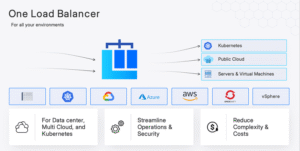
Isovalent, a unit of Cisco, today added a load balancer based on extended Berkeley Packet Filtering (eBPF) technology that is designed to be deployed anywhere.
Company CTO Thomas Graf said the Isovalent Load Balancer, much like any other load balancer, manages how requests to backend servers are routed, but instead of having a unique instance of a load balancer for every IT environment, it’s now possible to use the same one everywhere, including the network edge, a traditional virtual machine or on a Kubernetes cluster.
That approach not only reduces costs by eliminating the need for dedicated hardware; it also provides the added benefit of having a single logical point for authenticating, controlling and observing ingress network traffic, he added.
In addition to eBPF making it possible to deploy Isovalent Load Balancer at the kernel of an operating system to improve performance, Isovalent also makes use of eXpress Data Path (XDP) to send and receive network packets faster, a Maglev hash scheduler and a Direct Server Return capability to communicate back to clients from the Isovalent Load Balancer.
Additionally, the Isovalent Load Balancer includes observability using a log collector and dashboards to apply advanced analytics.
Collectively, those capabilities make it possible for the Isovalent Load Balancer to more easily scale, especially in IT environments running cloud-native applications on Kubernetes clusters, said Graf. Deployments of load balancers can now also be integrated into existing DevOps workflows, he added.
Cisco acquired Isovalent last year as part of an effort to gain access to open source Cilium network virtualization and security software, based on eBPF data plane, that is capable of processing millions of packets per second.
It’s still early days so far as the number of instances of operating systems that support eBPF. It’s only available in the most recent release of Linux. However, Microsoft has pledged to support eBPF in Windows, which should make it much simpler to create network overlays across a heterogeneous IT environment. The adoption of eBPF itself is now being advanced by The eBPF Foundation, an arm of The Linux Foundation committed to enabling a wide variety of software to run faster as sandbox programs at the kernel level in any operating system.
It may be a few more years before that vision is completely realized, but the number of networking, security and storage platforms that will take advantage of eBPF continues to expand.
The challenge, as always, is managing a migration to faster instances of those offerings over an extended period of time. Most organizations simply won’t be able to replace many of the existing networking, storage, security and observability tools they have in place wholesale with ones that can take advantage of eBPF.
Nevertheless, Isovalent, with a little help from Cisco, is betting the interest in Cilium and other offerings such as the Isovalent Load Balancer will only continue to rise as the benefits provided become simply too great to ignore.


